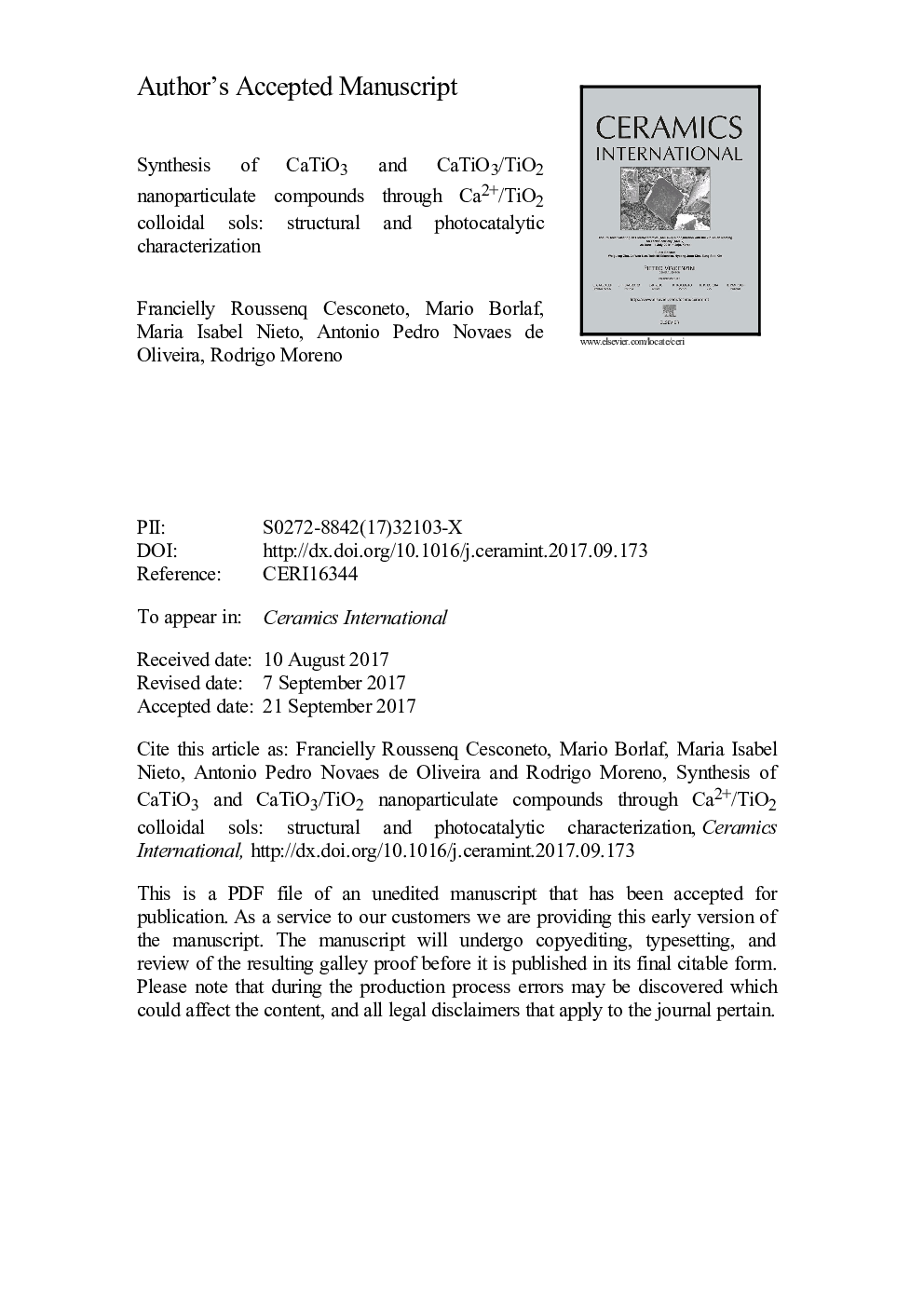| Article ID | Journal | Published Year | Pages | File Type |
|---|---|---|---|---|
| 7888943 | Ceramics International | 2018 | 24 Pages |
Abstract
CaTiO3 and CaTiO3/TiO2 nanocompounds have been synthesized through a colloidal sol-gel route using Ca2+/TiO2 nanoparticulate sols. The peptization time was determined so that as higher is the Ca2+ concentration, shorter is the peptization time. The obtained cryogels from the respective sols were calcined at different temperatures (300-900 °C) and the structural and morphological changes were characterized mainly by X-ray diffraction and transmission electron microscopy. In all cases, the formation of the CaTiO3 phase was observed after calcination at temperatures as low as 500 °C. Mesoporous cryogels with nanoparticles with sizes below 50 nm were obtained and their photocatalytic activity changes as a function of the calcination temperature and the applied wavelength were determined. Quantum yield values revealed that either CaTiO3 or the CaTiO3/TiO2 (0.4 M ratio) compound can be chosen as the most efficient photocatalyst at higher calcination temperatures and longer wavelengths, while TiO2 is more effective at low calcination temperatures and shorter wavelengths.
Keywords
Related Topics
Physical Sciences and Engineering
Materials Science
Ceramics and Composites
Authors
Francielly Roussenq Cesconeto, Mario Borlaf, Maria Isabel Nieto, Antonio Pedro Novaes de Oliveira, Rodrigo Moreno,
